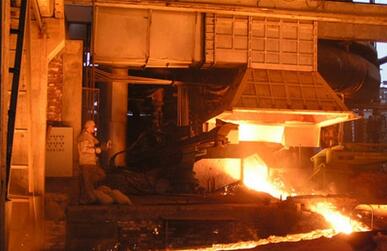Refractory knowledge
- The origin and development of refractory
- Improve the service life of chrome corund
- The production process of Refractory Bric
- The impact of Sino-US trade war on the re
- Lightweight fire brick performance
- How to Bake High Alumina Bricks
- Physical properties of refractory materia
- How to improve the insulation performance
Hot Products
Incinerator brick
Rotary furnace
Rotary furnace incineration system is derived from the design of refractory brick lining rotary calcining kiln which has been widely used in the cement industry. The garbage is fed from the front end of the rotating kiln which is inclined and slowly rotating. The rotation speed is used to control the advance speed of the garbage, so that the garbage is dried, incinerated and cooled during the forward transportation in the garbage rotary kiln, and the cooled ash is composed of The bottom end of the kiln is discharged. The whole furnace body of the rotary kiln can be formed by the cooling water pipe and the perforated steel plate to form a barrel shape. The steel drum can also be equipped with a fireproof lining. The furnace body is inclined downwards and divided into three sections: dry combustion and post-combustion. Special wheel support at the end. The special wheel is supported by four rollers. The sprocket drive rotates the wheel to rotate the furnace body. The garbage is on the furnace body. It is tumbling and forwarded by rotation. The preheated air passes through the perforated steel plate from the bottom to the kiln. Inside, the garbage can be completely burned.
The rotary kiln has wide adaptability for combustion and can incinerate waste of different performances. This type of furnace has fewer mechanical parts and fewer faults, and can be continuously operated for a long time. However, the rotary kiln has low thermal efficiency, consumes more fuel when auxiliary fuel is needed, has low exhaust gas temperature, has foul odor, needs deodorization device or introduces high temperature after combustion chamber incineration, because the kiln body is long, the floor space is large, and afterburning The grate structure of the room is relatively strict, so its cost is high and the price is relatively expensive.
2. Multi-step ladder grate furnace
The multi-stage step grate is composed of reciprocating moving parts, and the garbage is pushed to the inclined grate through the feeding device, and is heated at a high temperature in the furnace to make part of the garbage dry, and the movement of the grate not only pushes the garbage forward, but also The waste layer is loosened and can be subjected to various stages such as drying, fuel and afterburning to achieve complete combustion.
3. Fluidized bed furnace
Fluidized bed furnace combustion technology is a new type of clean combustion technology that was rapidly developed in the early 1960s. The essential feature of the incinerator adopting the technology is that a temperature-resistant air distribution plate is arranged in the lower part of the furnace, and the heat-loading ** particles are arranged on the plate, and the ** particles are boiled under the bed to form a fluidized bed section. A sufficiently high combustion section is provided above the fluidized bed section.
After the general material is put into the fluidized bed, the heat transfer and mass transfer rate between the particles and the gas is high, the material is almost completely mixed in the bed, and the waste thrown to the bed can be quickly dispersed evenly. Since the heat carrier stores a large amount of heat, the furnace temperature can be prevented from drastically changing during feeding, the temperature of the bed is kept uniform, and local overheating is avoided, so the bed temperature is easy to control. At the same time, it has high fuel efficiency, wide load regulation range, low pollutant emission, high heat intensity, and is suitable for burning low calorific value fuel.
4. Garbage incinerator
The rotary grate is easy to block due to vaporization, the maintenance workload is large, the possibility of large items being clamped is large, the mobile grate is large, the air duct system is complex, and the high-moisture, low-value garbage Incineration is not complete, fire is difficult and rarely used. The fan-shaped inverted grate is difficult to control due to combustion, and the furnace temperature is high, and it is still in the stage of continuous improvement.









